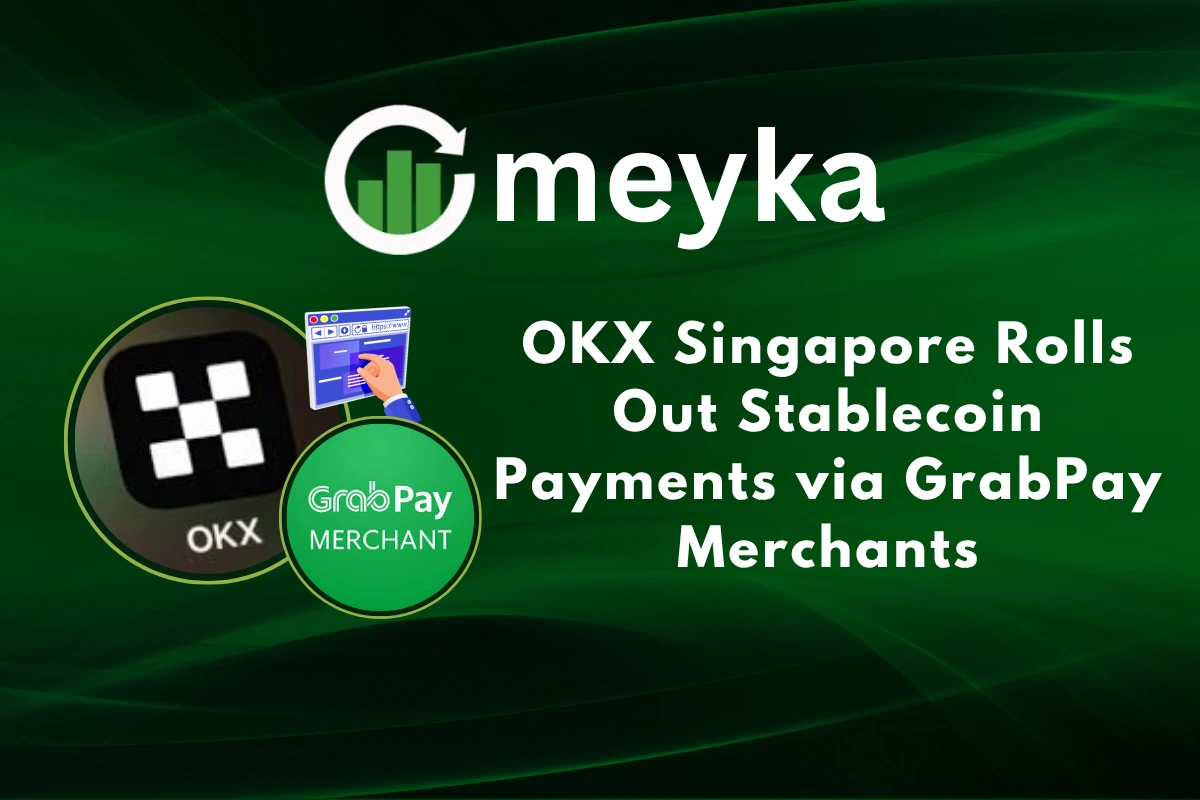OKX Singapore Rolls Out Stablecoin Payments via GrabPay Merchants
On 30 September 2025, OKX Singapore unveiled a bold step forward in payments: stablecoins can now be used to pay at GrabPay merchants across the city.
We often hear that cryptocurrencies are for trading or investments. But this move flips that idea on its head. Suddenly, you could buy a meal, pick up groceries, or pay for a ride all with your USDT or USDC balance. Behind the scenes, OKX Pay converts these tokens, via a system powered by StraitsX, into XSGD, then into Singapore dollars.
This is not just a technical trick. It’s a signal. A signal that crypto is bridging the gap into everyday life in Singapore. For users, it means convenience; for merchants, ease without volatility risk. For Singapore, it may chart a path toward how digital payments will work in the future.
Background on OKX and Singapore’s Crypto Landscape
OKX is a major global crypto exchange. Its Singapore arm has moved fast to win regulatory approval and build payments products. The firm got major in-principle and license milestones from the Monetary Authority of Singapore over the past year. These approvals let OKX offer regulated digital payment tokens and funds transfer services in Singapore. Singapore acts as a fintech hub in Southeast Asia. Regulators there have created clear rules for digital tokens. That environment attracts exchanges, payment firms, and infrastructure providers. These players now test ways to use crypto in daily life.
What Stablecoins are and Why they Matter?
Stablecoins are digital tokens tied to a real currency. The most common are USDC and USDT. They keep a near-fixed value versus the US dollar. That makes them easier to use for trade and payments. Stablecoins settle faster than some bank transfers. They can lower costs for cross-border payments. At the same time, regulated bridges help avoid volatility for merchants. Using stablecoins can bring crypto utility into shops, cafes, and transport. This shifts stablecoins from trading tools to payment tools.
The OKX-GrabPay Partnership: How it Works?
On September 30, 2025, OKX Singapore launched OKX Pay, a scan-to-pay service that links USDC and USDT to GrabPay merchant QR codes. Customers open the OKX SG app. They choose USDC or USDT. Then they scan the GrabPay SGQR code at thousands of merchant partners. Behind the scenes, OKX routes the payment through StraitsX. StraitsX converts USDC/USDT into XSGD, a Singapore dollar-pegged stablecoin.
Merchants receive Singapore dollars. This avoids exposing merchants to crypto price swings. The flow lets customers spend crypto while merchants settle in fiat. OKX and its partners call this move the first stablecoin scan-to-pay service in Singapore.
Impact on Merchants and Consumers
Merchants gain a new payment channel with minimal volatility. They keep settlements in SGD. The payment path reduces the need for manual conversion. That can cut settlement friction and simplify bookkeeping. Merchants that already use GrabPay can accept stablecoins without extra hardware. For consumers, the change adds convenience. Crypto holders can spend tokens in real stores. The setup keeps the usual payment patterns. Consumers simply scan and pay. This model may attract crypto natives and tech-savvy shoppers. It also gives merchants a way to tap a new customer base without taking currency risk.
Singapore’s Role in Web3 and Digital Payments
Singapore aims to be a leader in responsible Web3 adoption. Regulators, including MAS, push transparency and consumer protection. The country’s payment rules allow purpose-bound money and regulated stablecoins under defined frameworks.
Firms that comply can build broader services, from remittances to retail payments. OKX’s move shows how regulated stablecoin plumbing can link with mainstream payment rails. This may attract other fintechs and banks to experiment with similar integrations. Those same rules also mean startups must meet strict compliance checks.
Global Implications
If the OKX-GrabPay model scales, it could influence regional payment strategies. Southeast Asian markets have large unbanked or under-banked populations. Stablecoin rails could help lower cross-border costs for remittances and merchant payments. Global crypto firms will watch the Singapore experiment closely.
A successful rollout could inspire partnerships between exchanges, local payment apps, and regulated stablecoin issuers across the region. It may also shape how regulators balance innovation and risk.
Challenges and Risks
Several risks remain. Regulatory change could alter how stablecoins are treated. Consumer trust is critical. Users must feel confident about conversion, fees, and fraud protection. Merchant onboarding and technical integration might take time for smaller sellers.
Liquidity and settlement speed must also hold up during peak hours. Finally, public perception of stablecoins depends on clear communication of safeguards and auditability. Firms should keep transparency on reserves and controls to build trust.
Future Outlook
Expect incremental growth, not overnight replacement of existing payment rails. More merchants will likely test stablecoin acceptance for specific customer segments. Use cases may expand to cross-border micro-payments and rewards programs.
Financial tools could layer on top, such as instant remittances or stablecoin loyalty credits. Observers should also watch whether other major payment apps copy Grab’s model. Data from early adopters will shape whether regulators ease or tighten rules. The rise of tools like the AI stock research analysis tool shows how analytics firms can help measure adoption signals and merchant ROI in such pilots.
Wrap Up
OKX Pay’s launch on September 30, 2025, marks a clear step toward real-world crypto payments. The model bridges stablecoins with a large merchant network. Consumers gain an easy way to spend USDC and USDT. Merchants keep settlement safety in SGD. The initiative will not be without challenges. Still, it provides a template for how regulated stablecoin plumbing can meet everyday commerce.
Frequently Asked Questions (FAQs)
On September 30, 2025, OKX launched stablecoin payments. Users open the OKX app, choose USDT or USDC, then scan GrabPay SGQR codes. Merchants get funds in Singapore dollars.
Yes, OKX Singapore holds the required MAS approvals. These licenses allow it to provide digital token payment services under Singapore rules, ensuring safe use of stablecoin payments in daily transactions.
Merchants do not get stablecoins. OKX converts USDT or USDC through StraitsX into XSGD, then into Singapore dollars. This protects merchants from price swings while keeping settlement simple.
Disclaimer: The above information is based on current market data, which is subject to change, and does not constitute financial advice. Always do your research.






